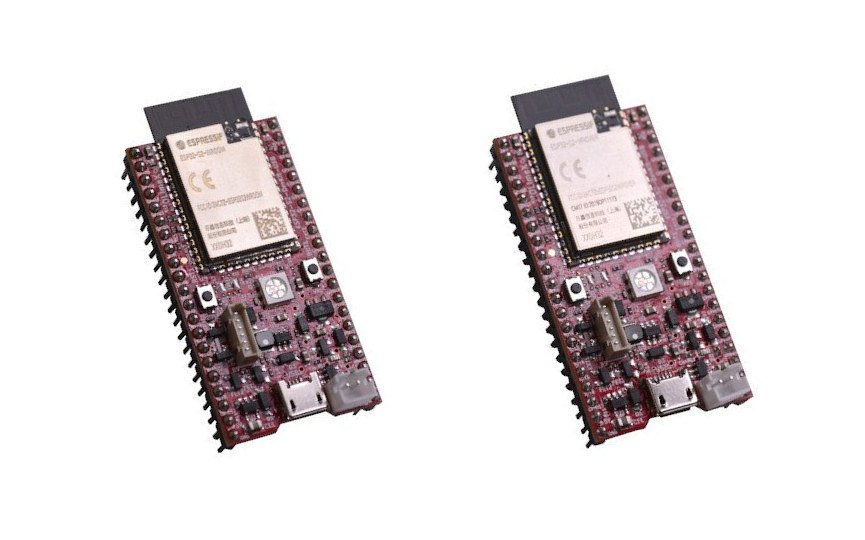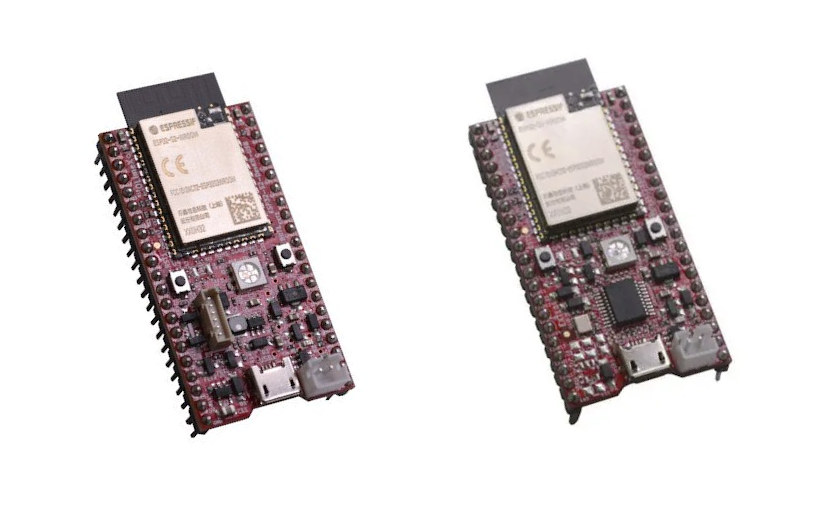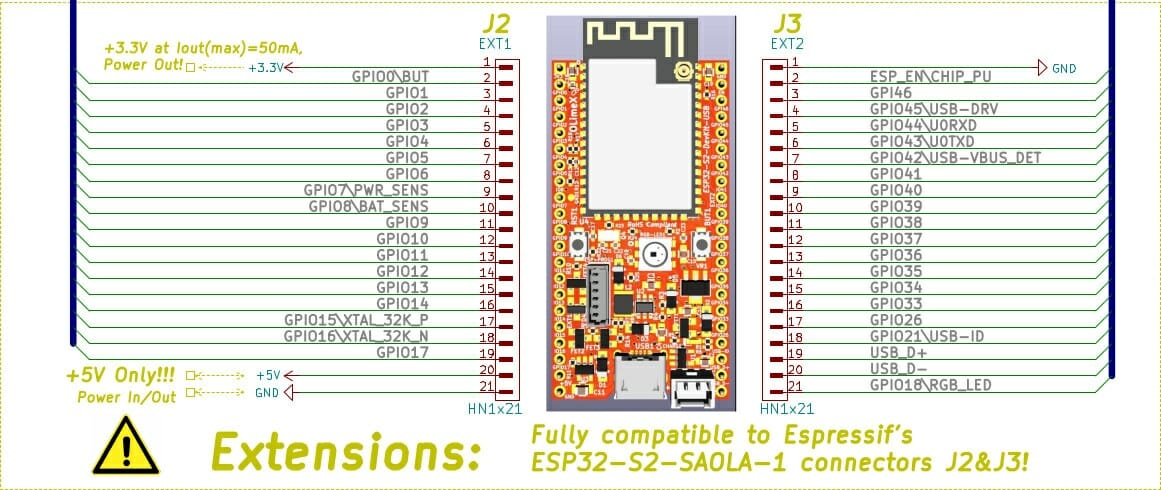Last year, Olimex introduced ESP32-S2-DevKit-LiPo and ESP32-S2-WROVER-Devkit-LiPo boards optimized for battery-powered applications with as little as 30uA deep sleep power consumption.
ESP32-S2 processor comes with a USB OTG interface, but at the time, Espressif Systems ESF-IDF SDK did not support programming via the built-in USB interface, so Olimex added CH340T USB to serial converter for programming.
The good news is that the SDK can now support USB programming without an external chip, so the company designed new versions of the boards without a USB to serial chip with namely ESP32-S2-DevKit-LiPo-USB and ESP32-S2-WROVER-Devkit-LiPo-USB boards.

The specifications are basically the same as previously except for the removal of the USB to serial chip, support for USB OTG, and even lower power consumption:
- Wireless module:
- ESP32-S2-DevKit-LiPo – ESP32-S2-WROOM with Espressif ESP32-S2 single-core 32-bit LX7 microprocessor up to 240 MHz with 128 KB ROM, 320 KB SRAM, 16 KB SRAM in RTC, 4MB SPI flash
- ESP32-S2-WROVER-Devkit-LiPo – ESP32-S2-WROVER – same as above plus 2MB PSRAM
- Wireless connectivity – 2.4 GHz 802.11 b/g/n WiFI 4 up to 150 Mbps
- Expansion – 2x 20-pin I/O headers with SPI, I2S, UART, I2C, touch sensors, PWM, etc… (pin-to-pin compatible with ESP32-S2-SAOLA-1)
- USB – Micro OTG USB port
connected via CH340T USB to serial chip - Misc – RGB LED, Reset button, user button, 6-pin header for programming
- Power Supply
- 5V via micro USB port or I/O pins
- 2-pin header for LiPo battery plus battery charging and monitoring circuit, external power supply sense
- Power consumption as low as 20 uA in deep sleep mode, 65 uA for ESP32-S2-WROVER

One may think removing a chip and connecting the USB interface directly to the micro USB port may be a trivial task, but Olimex explains it was quite complicated as they wanted to keep the LiPo charger and battery circuit, and notably be able to charge the battery in USB OTG mode, while providing 5V in host mode.
Since the boards are open-source hardware, you can also check out the schematics posted to Github, where you’ll also find an Arduino sketch controlling the RGB LED. It should however be noted that while the hardware supports USB device and host modes, but USB host functionality is still missing in ESP-IDF SDK.
You can buy the boards for 6.95 and 7.95 Euros respectively, and find additional links to documents on Olimex website.

Jean-Luc started CNX Software in 2010 as a part-time endeavor, before quitting his job as a software engineering manager, and starting to write daily news, and reviews full time later in 2011.
Support CNX Software! Donate via cryptocurrencies, become a Patron on Patreon, or purchase goods on Amazon or Aliexpress





